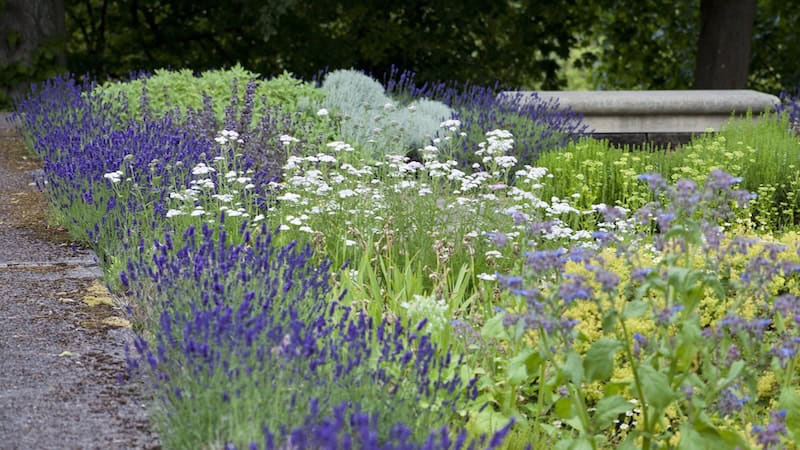The In-Law Suite
10 tips to designing it for safety and smarts
Are you considering having a family member move into your home?
Wayne Booze (inset), owner of DesignLine Home Transformations, offers advice gained both from clients and from his personal experience of retrofitting his home to share with his father. “Having him move in has taught me in a very practical way,” he says. “My training and all I’ve learned over the years has been important, but now I’m seeing firsthand how little things can mean so much.”
Booze is a Certified Aging In Place Specialist (CAPS) remodeler, as designated by the National Association of Home Builders. The CAPS program teaches the technical, business management and customer service skills essential to the fastest growing segment of the residential remodeling industry: home modifications for the aging-in-place.
Your situation might involve a sister, brother, cousin, friend, aunt or uncle. For simplicity, we assume a baby boomer’s most common situation: a parent’s moving in.
1. SERIOUSLY CONSIDER WHETHER THIS IS GOING TO WORK
Consider the personalities of both the parents and the homeowner children. Many parents are resistant to losing their independence or feel they may be a burden. Their children need to realize their own lives will be different. Yes, the positives of enjoying a glass of wine together, watching favorite TV shows or simply being with the person who raised you and loves you are potentially there. But don’t go into a renovation without full consideration of both the positives and the negatives.
2. MORE THAN A BEDROOM
It’s more difficult than simply giving up the guest bedroom. A separate area including bedroom with living area, bathroom and kitchenette provides privacy and independence. Generally laundry, main kitchen and family rooms are shared space.
3. COST-EFFICIENT SPACE IS NOT ALWAYS ON THE FIRST FLOOR
Certainly first-floor space would be ideal. But be flexible with your home. It might be more cost-effective to decide how to navigate stairs as needed via lifts or residential elevators, retrofitting underused upstairs space, than to expand with an expensive addition to the home’s ground level.
4. INCORPORATE THE HOME THEY LOVED
The simplest comforts matter. Incorporate your parents’ familiar furniture, artwork and photos to make the new home feel like the old home.
5. BATHROOM SAFETY FIRST
Bathrooms are where most accidents happen, so include: Curbless showers, with the floor of the bathroom extending into the shower, sloping for drainage. With nothing to step over, falls are reduced.
Grab bars. Don’t like the institutional steel look? They come in various colors and designer looks, also.
Floors. Don’t use marble or other highly slippery surfaces. Tiles have slip coefficients on the back.
Faucets. Some elderly are less sensitive to touch, leading to burns. Solutions: Some faucets have a red or blue indicator light depicting water temperature. Consider thermostatic valves in showers: The temperature is preset to a desired heat so that only the volume knob is used to control water flow.
6. KITCHEN CONCERNS
For many seniors, the microwave is the easiest and safest form of heating. There’s also a practical in-law suite consideration – easy compliance with code. (It’s OK to have a counter, sink, drawers, refrigerator and microwave, but not a range, in a second kitchen.)
For a shared kitchen, consider an induction cooktop. Induction cooking heats only the area that comes into contact with cookware. Make sure the knobs are on the front to avoid sleeves going over burners to reach them.
7. DIFFERENT TEMPERATURE NEEDS
Some elderly get cold more easily than their housemates. One interesting solution could be a Prestyl Far Infrared heater, not common here yet but used in Europe for more than 15 years. The heater can look like a piece of art or even a loved photograph. It saves energy by heating objects (a person, floors, surface) rather than the air. It might be used effectively in the anteroom out of the shower.
8. LIGHT FOR SAFETY AND CONVENIENCE
Lighting is important to all home design but carries extra weight if vision is impaired. Illuminated rocker switches are easier for people without fine motor skills to operate, and they also provide some light. Nightlights, consideration of glare and lighting in kitchen area and baths should be incorporated.
9. AND WHEN THE IN-LAW SUITE ISN’T ENOUGH …
There will be times that you will want to go away for the weekend or go on vacation. There might be a need for help in the daytime while you’re at work.
Avoid burning yourself out. Think longterm, not the energy needed for a short-term sprint.
Know your options. Many independent or assisted-living communities offer respite care, a term that means short-term stay options. Home health agencies can provide either non-medical or medical care, generally with 3- or 4-hour minimum shifts.
And, of course, there might be family or friends who want to share time with your home mate while you’re away.
10. LIVE LIFE FULLY
Life goes on. People adjust. The teenager who has the natural tendency of living in a tech bubble gets to know his family history. You enjoy helping those who helped you. Your parent enjoys fellowship. The dog gets extra treats. Family memories are remembered and created.


